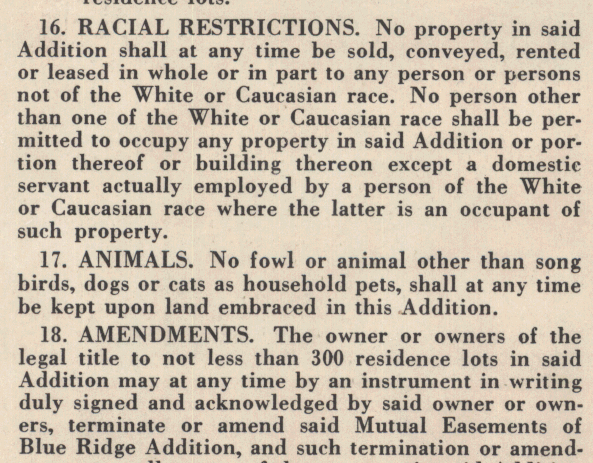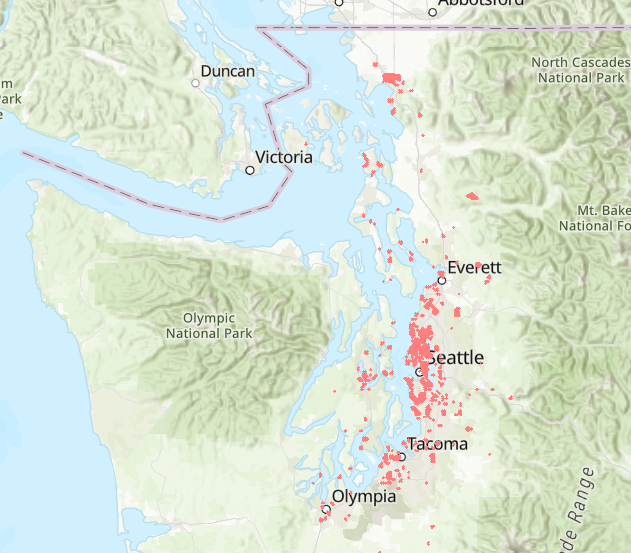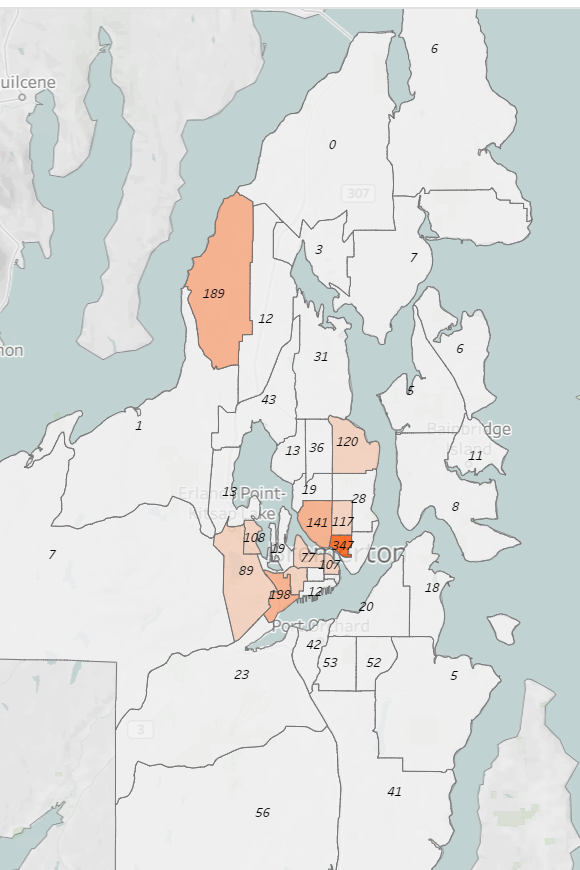This interactive map shows the location of more than 2,000 properties that carried racial and sometimes religious restrictions. Zoom to see addresses and restriction language. We are still adding and correcting entries. See research note.
(Map by Liz Peng)
Reading the map
This preliminary map shows where racial restrictions were added to property records in the decades before 1968. The map currently shows more than 2,000 properties in 39 subdivisions, but our research is ongoing, so check back for updates. Zoom for a closer look or use the search tool. Do not assume that areas without marks were unrestricted. Neighborhoods without covenants often practiced racial exclusion by other means.
The Logic of Restrictions
Areas platted (subdivided) between 1925 and 1950 were most likely to be restricted. Realtors and developers wrote racial exclusions into the initial subdivision documents. All properties in the subdivision were thus legally restricted.
It was more complicated to restrict older areas. Neighborhood associations sometimes organized petition drives and convinced white homeowners to add racial restriction clauses to their properties. However, just because there are some areas on the map that appear to be unrestricted, does not mean that racial exclusion was not enforced by other means.
The Language of Restrictions
Look at the language of restriction in these deeds. Some specify that neighborhoods are reserved for "Whites," while others enumerate the prohibited racial groups. And the wording is curious. In the terminology of the 1920s-1940s "Hebrews" meant Jews; "Ethiopians" meant all African ancestries; "Malays" meant Filipinos; "Mongolians" meant all East Asian ancestries; "Hindus" meant all South Asians.
Deeds, Plats, Covenants, Petitions
When you click on a property, the pop-up displays address, subdivision (plat), the language of restriction, developer, initial date of restriction, and documentation. This can be either a deed, plat document covering all properties in the subdivision, CCR (separate document filed by developer covering the subdivision), or petition filed by a group of owners covering their listed properties. The last possibility is "Sanborn rule." Courts usually ruled that restrictions could apply even if not mentioned in a deed of sale provided the developer had routinely imposed them in earlier sales. This derived from a 1925 Michigan Supreme Court decision in Sanborn v. McLean.
Why do so many neighborhoods appear to be unrestricted?
Restrictive covenants were only one of the tools used to exclude people of color. In older neighborhoods and in the suburban areas that were beginning to develop in the 1950s deed restrictions were too complicated to be widely employed. White supremacists used other means. Real estate agents refused to show property in white neighborhoods and if a family did find a house to rent or buy, they faced neighborhood hostility, harassment, and sometimes violence. Many parts of the county were effectively Sundown Towns.
-- Explore Maps of Sundown Towns
Segregation/exclusion in 1980
The map at right shows where Black people lived in 1980, demonstrating the the continuing effects of racial exclusion. In 1980, the county was 92% white, with 2,683 African Americans, 4,557 Asian Americans, 3,766 Latinos, and 2,020 Indigenous Americans. Click to go to an interactive version of the map with full demographic data.
Credits
Research by Sophia Dowling, Sam Cutts, and Erin Miller. Map by Liz Peng




